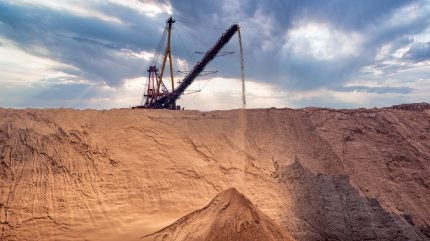In a recent whitepaper titled ‘Breaking New Ground: Beneath the Surface,’ Shell Lubricants outlined how underground miners can enhance the productivity, safety and sustainability of their operations, and get ready for the future, while adapting to new technologies – all by implementing a more holistic, expert-led approach to equipment lubrication.
Vanessa Boag, Shell Vice President, Global Marketing Lubricants states: “As our new Voice of the Underground Customer study highlights in this whitepaper, lubricant experts are vital in helping underground miners to understand the benefits of such a holistic approach to proactive equipment maintenance. They help site operations and maintenance teams look at the bigger picture to see the value of lubrication solutions over their entire lifecycle – exploring what they can do for their equipment and the positive impact they can have on site operations.”
Miners understand the conditions they face when working in the underground environment, but the effects on machine health and efficiency are often not fully realised. The deeper miners dig, the hotter their operating conditions become, putting components under ever-greater strain and increasing the risk of failure. The lower oxygen levels in underground mines also place a higher strain on engines, causing greater wear and reducing the lifetime of the equipment.
The high levels of water used in extraction processes increase the risk of contamination and corrosion – as well as washout of the lubricants which are meant to be protecting components. With mine shafts reaching more than 3,000 metres under the surface, repairs and replacements become incredibly difficult and
time consuming – leading to higher amounts of unplanned downtime and lost productivity.
Shell states: “The extreme conditions associated with underground mining operations place considerable strain on machinery, including temperatures that can rise as much as for 30°C for every kilometre of depth. Meanwhile, restricted spaces and limited access can make even routine repairs and maintenance difficult. Finding ways to optimise efficiency, extend equipment life and prevent breakdowns is therefore paramount to underground mining success. Which is where effective lubrication comes in. High-performance lubricants are designed to protect key components from friction and wear. Likewise, the right lubricant can enhance water resistance to prevent grease or oil being washed out while delivering the heat- and fire-resistance properties that are essential for maintaining safety and productivity in underground mining environments.”
From jumbo shaft drills and shearers to continuous miner machines, it says these features add up to equipment that can run better for longer. This, in turn, lets companies streamline operations, reduce total cost of ownership (TCO) and support a reduction in their carbon footprint.
“But the lubricants themselves are just one part of a holistic strategy. Expert-led services can also be invaluable in helping underground miners maximise efficiency while minimising their emissions. For example, real-time oil condition monitoring can reduce unplanned downtime through preventative maintenance. Similarly, partnering with lubricant specialists (either digitally or on site) may improve equipment performance while reducing emissions. This includes technical support in areas like fluid contamination and temperature control along with training for machinery operators on how to optimise their lubrication processes.”
Lubricants that are compatible with the seals and gaskets on equipment are essential in improving reliability and longevity by preventing leaks and contamination. High volumes of water are used to extract
metals and minerals in underground mines, which means sites need lubricants that prevent washout and the resulting corrosion of components. Miners can look to use lubricants that contribute to equipment longevity and efficiency by reducing friction, wear and tear. Using lubricants that can manage the heat generated by extended machine operations – especially in the depths of an underground mine – is vital for maintaining equipment efficiency.
Shell concludes: “Put simply, underground operations offer a compelling opportunity for miners to increase output in line with demand while delivering on their sustainability objectives too. This underlines the industry’s potential as first-class investment in both the short- and long-term. To seize this opportunity, firms must build an effective lubrication strategy that combines the right products, tools and expert partners to bring the best out of their equipment even in the harshest of operating environments. Do that and it won’t just be their own business that reaps the rewards – they can help power the world towards a cleaner, safer future.”
Shell lubricant brands used in mining include Shell Rimula heavy-duty engine oils designed to deliver enhanced wear protection, improved engine cleanliness and longer oil life; Shell Tellus hydraulic fluids formulated to provide enhanced wear protection, long oil life and high system efficiency; Shell Spirax axle, gear and transmission oil developed to help drive energy efficiency while reducing fuel consumption and maintenance costs; and Shell Omala gear oils created to extend gearbox life and drive system efficiency, even in challenging conditions.
These are backed up by services including Shell LubeExpert, available to industrial customers who want a higher level of technical support for specialty applications, product support and inspection services; and Shell LubeAnalyst, an oil condition monitoring service giving users access to Shell industry experts that use equipment and lubricant insights to provide preventative maintenance recommendations.




